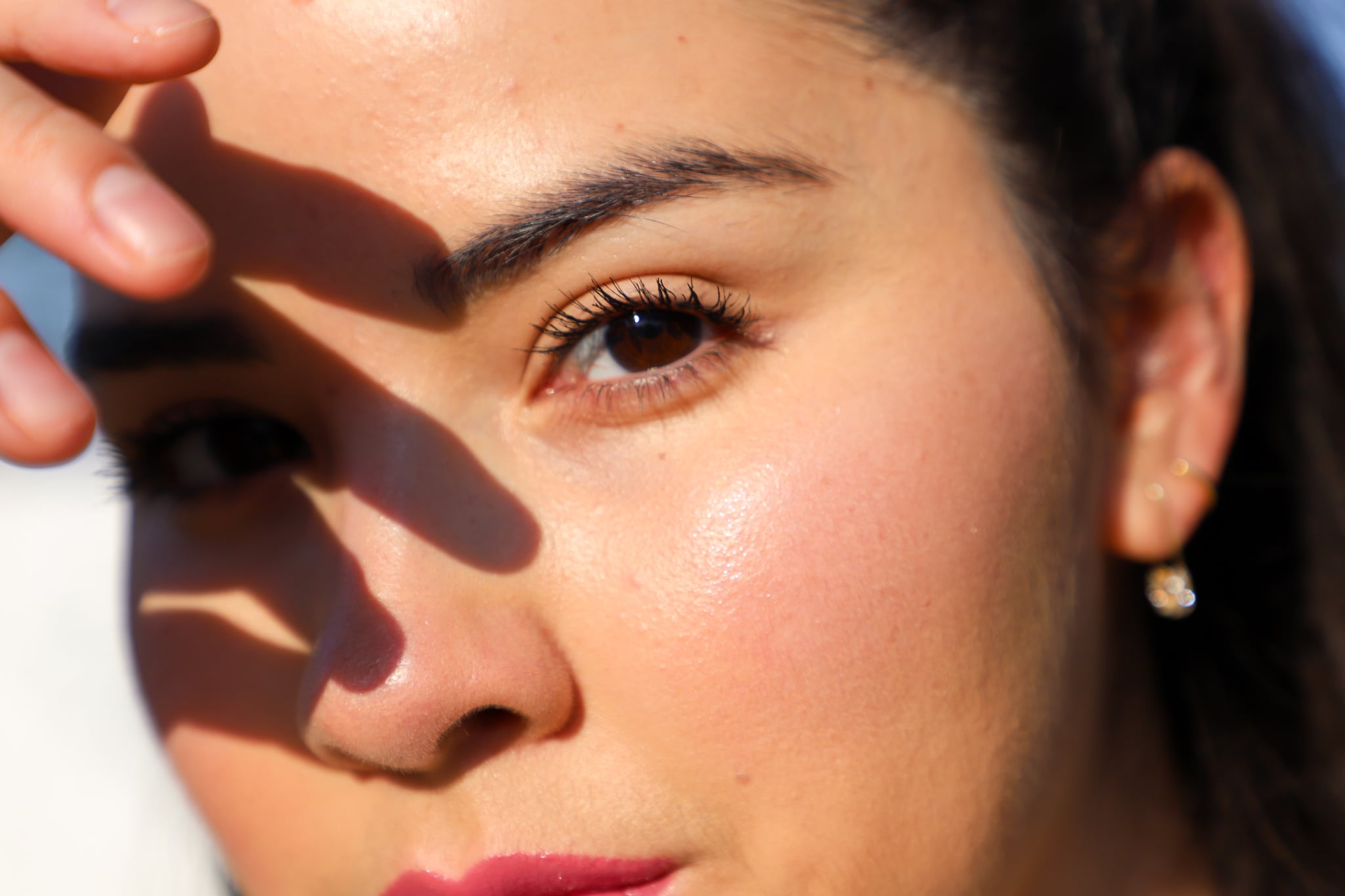
You're staring at yourself in the mirror (or whatever, the thousands of granulated pixels on Zoom). You notice a smattering of protruding, minuscule dots across your nose. If you're dramatic, you gasp. But even the calmest person out there might be tempted to grab the extraction tool [2].
We have one word for you: don't.
Why? For one thing, they might not be the blackheads you're making them out to be. While nearly identical in appearance, these are most likely another thing entirely: sebaceous filaments. These are not a form of acne, they are not clogged pores, and they needn't be "degunked." Rather, sebaceous filaments are tube-like structures that fill your pores and happen to be . . . just a normal part of skin. Let us explain.
What Are Sebaceous Filaments?
We repeat: sebaceous filaments are different from blackheads. "Blackheads will be raised, textured, truly black, thick, and waxy," aesthetician Candace Marino [3] tells POPSUGAR, adding that these actually block the pore, whereas sebaceous filaments do not. "Sebaceous filaments are the normal function of the follicle. Narrow, lighter in colour under the skin — they do not fully obstruct the pore and are not meant for extractions."
What Causes Sebaceous Filaments?
Robert Finney [4], MD, board-certified cosmetic dermatologist at Entière Dermatology [5], adds: "Sebaceous filaments occur when our oil glands overproduce and get mixed in with some dead skin cells, which can make pores appear slightly larger. Sometimes they also have little black dots, which is thought to be due to oxidation of the material." As in, when the tube-like collection of sebum is exposed to air, it changes to a darkened colour that might mimic a blackhead.
That said, some people's sebaceous filaments are more visible than others. This is thanks to a mix of oil buildup and genetics (say hi to uom).
How to Treat Sebaceous Filaments
You might be wondering how to get rid of them. The answer, put simply: you can't (at least not permanently), but there are ways to treat them so pores appear smaller.
Because sebaceous filaments are different from blackheads, you should not — ding ding ding — treat them the same. Do not squeeze, pop, prod, or (for the love of god) try to extract them [6], and instead look for gentle exfoliating ingredients in your skin-care products that can slough away those dead cells on a regular basis.
View this post on Instagram[7]
"Many ingredients help to exfoliate dead skin cells and cut down on oil production: benzoyl peroxide [9], alpha and beta-hydroxy acids, as well as retinoids," Dr. Finney says. "Salicylic acid is something that helps break up the oil and dead skin cells. You can find many over-the-counter face washes and topicals that have this as an active ingredient."
To keep your sebaceous filaments in check, we recommend you wash your face [10] with a gentle, salicylic-acid-packed formula like the CeraVe Renewing SA Cleanser [11] (£14) daily to help dissolve any oil buildup, and then apply an OTC retinoid treatment [12] to keep sebaceous filaments from coming back. (With the latter, it's best to start by applying the treatment once a week and work your way to everyday usage.)
"Retinoids like the Differin Treatment Gel [13] (320) can help relax blockages and minimise the appearance of pores," Dr. Finney says. "The benefit with retinoids is they also have antiaging effects. The important thing is to start with one product and still make sure to moisturize. If you are too aggressive with your skin, it will get dry and irritated, and it will actually ramp up your oil production."
Then, perhaps the most imperative to-do: step away from the magnifying mirror.